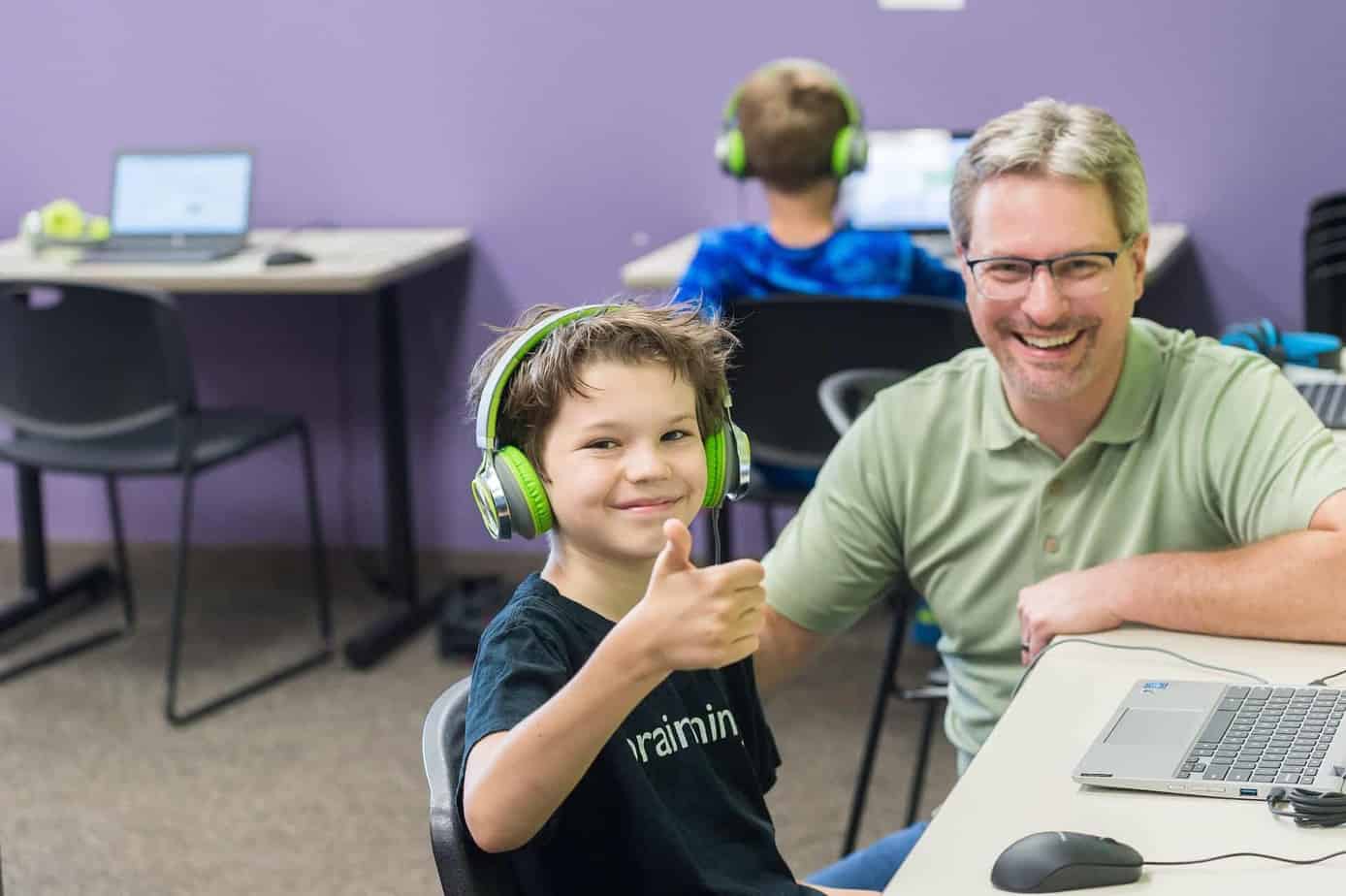Simple Breathing Exercises for In-the-Moment Coregulation
Stressful moments happen frequently. Whether you’re a child or adult, it’s easy for emotions to ramp up and suddenly feel out of control. As adults, we’ve learned to regulate these emotional outbursts, but kids do not have that luxury—unless they’re taught how to do it. Coregulation happens when a steady presence helps to ease the mounting fire of emotional dysregulation caused by either a chronic stressor or an acute trauma. And for many kids, learning and school environments act like this kind of stress on the brain.
Why does this happen? Here’s how the brain responds to stress (and why stressed out brains can’t learn) >>
The Importance of Coregulation
As babies, we know when they need to be held and soothed. As kids get older, it becomes harder to know when you should step in (or how to do it in a way they’ll tolerate). The need for coregulation doesn’t go away once kids reach school age. In fact, it’s not until their prefrontal cortex has fully developed and they reach adulthood that this ability to effectively manage reactions is fully in place.
Kids who are in stress mode need to have tools in their toolbox to help them downgrade their threat response system and approach a situation calmly. They can only do this if they have a model (and practice!) to make it second nature.
Practicing Stress Response Strategies
In the moment of an acute stress, the brain cannot process language or information effectively. This is why it’s crucial to practice coregulation strategies outside of the heat of the moment so a simple nudge can remind kids of the tools they have at their disposal. Even spending 5-10 minutes a day practicing one or more of these breathing and grounding techniques can equip your child for the moments they’ll need to use them.
Simple Breathing and Grounding Exercises:
- 5-4-3-2-1: Have your child name 5 things they can see, 4 things they can feel, 3 things they can hear, 2 things they can smell, and 1 thing they can taste. (Feel free to mix up the order of the senses. The goal here is to ground them in the present and send safety signals to the brain.) Repeat 2-3 times for an in-the-moment grounding practice.
- Voo breathing: Take a big inhale and then exhale slowly, saying the word “voo” in a lower voice register (like a foghorn). The vibration of this exercise stimulates the vagus nerve, instantly slowing heart rate and down-regulating the emotional reactions in the body.
- The Sigh: The exhale is more important than the inhale when it comes to breathing exercises (that’s why telling your child to just “take a deep breath” isn’t enough to calm them down). For “The Sigh,” inhale normally then do an additional short inhale, followed by a long exhale (or sigh). Repeating this 2-3 times should instantly calm a stressed-out kiddo (or parent)!
- 4-7-8: Again, the exhale is more important than the inhale. For this exercise, inhale for the count of 4, hold for the count of 7, then exhale for the count of 8. Repeat several times to signal safety and to calm the nervous system, restoring the brain to its calm and controlled state.
- Listen to 1 instrument: This one is an especially great exercise for teens! Have them listen to their favorite song, tuning in to only one of the instruments at a time. This level of focus will ground them emotionally and calm the mounting stress response in their body.
- Take a walk: Get outside in nature when you feel the tensions rising. Studies show that sunlight and fresh air can improve mood, calm stress, and restore stability to a stressed-out brain.
Ways to Build Your Child’s Resilience (Ability to Bounce Back)
Do you feel like once you hit stress mode it’s impossible to draw your child back into the task at hand? If so, it’s a sign of low resilience (which is incredibly common in individuals with learning struggles).
Building your child’s resilience can help them handle stressors appropriately and bounce back from stress mode to re-engage the logical thinking part of their brain. Coregulation, breathing, and grounding exercises are one piece you can do to help with this, but it’s not a long-term solution.
Building your child’s resilience also involves making sure they’re feeling connected with you, competent at something in their lives, and cognitively able to handle the tasks at hand.
Expanding your child’s cognitive abilities is a critical tool that we are able to help with at LearningRx! Our cognitive training programs retrain patterns of thinking to help your child reach their fullest potential. Click here to learn more about our programs >>







